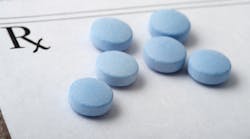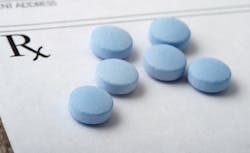Opioid Crisis
The opioid crisis
Through education and assessment, dental hygienists
can make a difference in preventing addiction
JoAnn Gurenlian
Last year, I slipped and fell in the rain, and landed hard on my right shoulder. I broke my arm and tore a number of tendons and ligaments in my shoulder, requiring several surgeries. The orthopedic surgeon felt that I would need something for pain relief after each surgical repair, so he prescribed hydrocodone/acetaminophen (5 mg/300 mg) one to two tablets every six hours as needed for pain. I was given 90 pills total. Everyone—and I mean everyone (nurses, the physical therapist, others who had undergone shoulder surgery, friends, . . . )—encouraged me to take the pain medicine faithfully to stay ahead of the pain as it would be wicked.
A colleague, who is a pharmacist, advised me differently. He cautioned me that opioids are addicting and suggested that I take them for several days, and then switch to alternating between Tylenol and Advil. He assured me the alternate pain relief would be similar, but not addicting. I tried one prescription pain pill, felt dizzy and nauseated, switched to the Tylenol/Advil regimen, and applied a lot of ice to the surgical site. This treatment worked well. Given the opioid addiction problem in this country, I probably could have sold the other 89 prescription pain pills, but I would likely be writing this column from a prison cell.
You might be thinking, ‘Phew! We in dental hygiene are off the hook.’ But consider that soon we will be prescribers, so we need to understand our responsibility when patients ask us for pain medication.
Seriously, we have an opioid crisis in this country. When presenting with noncancer pain symptoms, approximately 20% of patients are prescribed opioids, according to Dowell et al.1 This finding includes both acute and chronic pain diagnoses. Even more staggering, 259 million prescriptions for opioid pain medications were written by health-care providers in 2012.2 This statistic translates to enough medication for every adult in our country to have a bottle of opioids. While estimates of chronic pain vary, opioid misuse, overdose, and death have become public health epidemics. From 1999 to 2014, approximately 165,000 individuals died from opioid overdose.1 Further, it is estimated that another two million suffer from opioid use disorder (OUD), costing $78.5 billion annually.3
The medical and public health communities and the federal government have begun to address this alarming health crisis. The solution begins with prescribing clinicians. The Centers for Disease Control and Prevention (CDC) has created recommendations for prescribing opioids for chronic pain, which include actions for determining when to initiate or continue opioids; opioid selection, dosage, duration, follow-up, and discontinuation; and risk assessment and how to address the harms of opioid use.1 A campaign called “Turn the Tide” was launched this year to help physicians learn more about safe prescribing practices, managing pain, and linking patients to addiction treatment programs.4
As you read this, you might be thinking, “Phew! We in dental hygiene are off the hook.” But consider that soon we will be prescribers, so we need to understand our responsibility when patients ask us for pain medication. And we need to be aware of what our colleagues in dentistry are doing as current prescribers of opioids. Further, we witness patients every day who experience OUD and need treatment. This is often a silent epidemic. These patients look fine outwardly, dress well, and don’t “appear” to be addicts. If we are not assessing for addiction, we won’t know they are in a crisis situation. When was the last time you asked about pain medication use as part of the patient medical history? Do your patients readily report using oxycodone (OxyContin), hydrocodone/acetaminophen, fentanyl, or other opioids on their health history forms? Do we talk about addiction and addiction treatment as part of our assessments? Do we ask if patients are undergoing medication-assisted treatment with buprenorphine or methadone alone or in combination with behavioral therapy for OUD?
The opioid crisis in America is yet another example demonstrating that dental hygienists are more than just people who “clean teeth.” The assessments and education we provide can make a huge difference in helping our patients achieve total health.
JOANN R. GURENLIAN, RDH, PhD, is president of Gurenlian & Associates, and provides consulting services and continuing education programs to health-care providers. She is a professor and dental hygiene graduate program director at Idaho State University, and past president of the International Federation of Dental Hygienists.
References
1. Dowell D, Haegerich TM, Chou R. CDC guideline for prescribing opioids for chronic pain—United States, 2016. MMWR Recomm Rep. 2016;65(1):1-52. doi: 10.15585/mmwr.rr6501e1.
2. Paulozzi LJ, Mack KA, Hockenberry JM. Vital signs: variation among states in prescribing of opioid pain relievers and benzodiazepines—United States, 2012. MMWR Morb Mortal Wkly Rep. 2014;63(26):563-568.
3. Schuchat A, Houry D, Guy GP Jr. New data on opioid use and prescribing in the United States. JAMA. 2017;318(5):425-426. doi: 10.1001/jama.2017.8913.
4. Opioid overdose. Guideline resources: Clinical tools. Centers for Disease Control and Prevention. US Department of Health and Human Services. https://www.cdc.gov/drugoverdose/prescribing/clinical-tools.html. Updated August 30, 2017. Accessed September 4, 2017.








